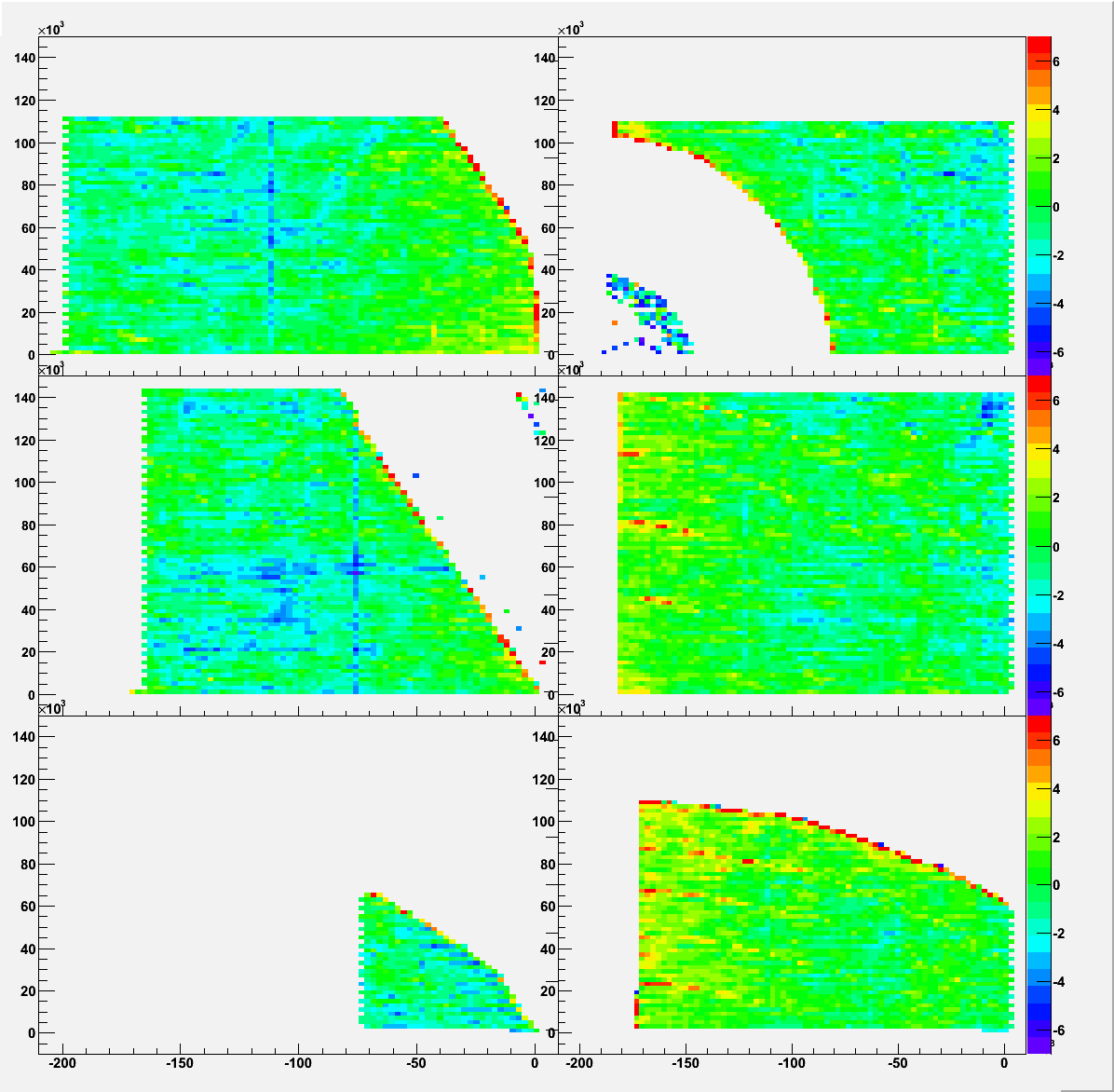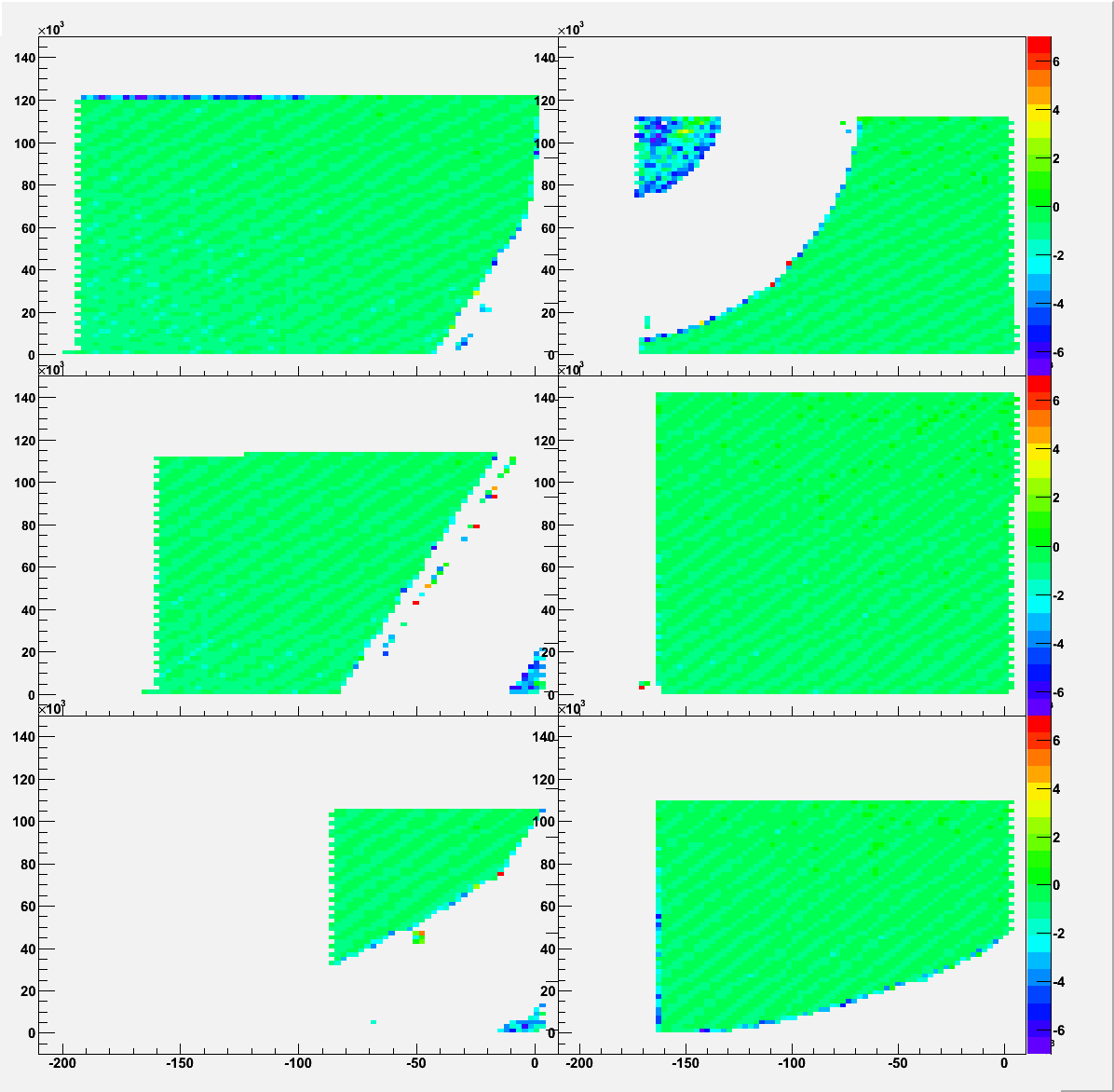- seelej's home page
- Posts
- 2011
- 2010
- December (2)
- November (3)
- October (3)
- September (3)
- June (2)
- May (3)
- April (2)
- February (9)
- January (1)
- 2009
- December (1)
- October (3)
- September (4)
- August (1)
- July (1)
- June (6)
- May (1)
- April (4)
- March (5)
- February (1)
- January (4)
- 2008
- My blog
- Post new blog entry
- All blogs
Progress on GEM Scanning
----------------------------------
UPDATE on 7/21/2009
----------------------------------
For some further QA of the foils we decided to rotate the foils by 180 degrees on the scanner and re-do the scans to see if the anomalies were in the same places. Below are two 2d pictures of the same foil. They are both maps of the outer hole diameters. And the divisions are the same in both images (i.e. that the upper left in image1 corresponds to the upper left in image2). From the two images you can indeed see that the anomalies arise in the same places so that we are confident that our scanner is measuring things consistently.
(Image1 - normal alignment)

(Image2 - 180 degrees rotated alignment)

________________________________________
UPDATE on 7/18/2009
________________________________________
If you recall the results presented at the STAR analysis meeting at MIT (drupal.star.bnl.gov/STAR/meetings/star-analysis-meeting-2009-mit/fgt-upgrade-session/ccd-scans-gem-foils), you will remember that especially in the pitches there was a sinusoidal pattern in the value calculated from each picture. I surmised that this was do to the scanner "walking" a bit vertically as it moved horizontally (directions are arbitrary). This caused holes to slowly move into the image and slowly move out of the image. Now the pitches are calculated from the centroid of the cluster and not always the centroid of the hole this was causing some of the pitches to be too small as they were really only calculated to the edge of the hole closest to the other holes. So to get rid of this effect I chose the analysis path and had Willie cut any hole whose centroid was within 50um of the edge of a foil (or in converted units.. ~13pixels). And you can see a before and after below in the two images
Before :

After : (The only scan where the analysis was modified is in the lower right of this image)

On To-Do (Currently Doing) List for QA
- Rotate foil by 180 degrees on scanner to see if hot/cold spots are still in the same places
- Implement the random scanning
- seelej's blog
- Login or register to post comments
